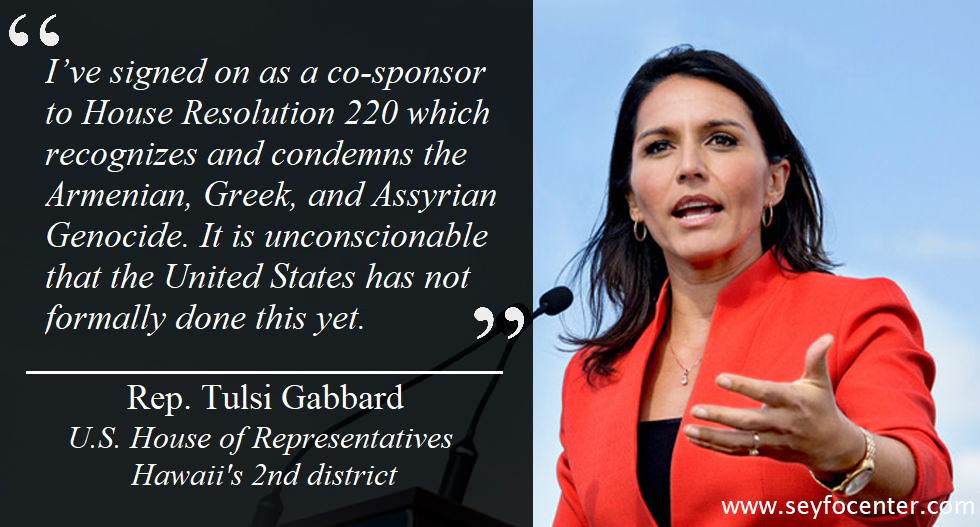By Terry.Stavridis
The document attached provides an excellent and succinct overview of Assyrian history from 1914-1944.[1] There are undoubtedly important themes that emerge in the reading of this document from the National Archives of Australia collection.
These are:
- The Assyrians were driven out from their ancestral lands in the Hakkiari mountains of Eastern Turkey and ended up in the Urmia district of Persia during the First World War. The collapse of Tsarist Russia in 1917 did not assist the Assyrian cause. They were abandoned by an Allied friend and left to fend for themselves;[2]
- The defeat of the Greek army in September 1922 by the Turkish Nationalist army led by Mustapha Kemal Pasha paved the way for the establishment of the modern Turkish State in October 1923.[3] During the first phase of the Lausanne Conference, General Agha Petros, the Chief Assyrian negotiator, submitted a memorandum to the British Foreign Office official, Forbes Adam outlining the claims of Assyrian autonomy. However, the major European powers were not interested in helping the Assyrians to fulfill its cherished dream of autonomy.[4] The Lausanne Treaty, signed on July 24, 1923, established peace between Greece and Turkey. Articles 37-45 of this same Treaty guaranteed and protected the religious and political rights of Christian minorities domiciled in the new Turkish State. The Assyrians were not mentioned in the Treaty of Lausanne;[5]
- Turkey was not prepared to cede the Hakkiari region to Iraq under no circumstances. With great reluctance, Turkey finally ceded the Mosul Vilayet to Iraq in1926 with the Anglo-Iraq-Turkish Treaty settling the Iraqi-Turkish frontier. One must not forget that the signatories to the Treaty understood the importance of oil around the Mosul region.[6] The author believes that Article 14 of the United Kingdom-Iraq-Turkey treaty was the clincher ending the impasse over Mosul. It stated :
Iraq shall pay the Turkish Government for a period of twenty-five years for the coming into force of the Treaty 10 percent on all royalties which it shall receive:-
(a) from the Turkish Petroleum Company under article 10 of the concession of March 14, 1925;
(b) from such companies or persons as may exploit oil under the provisions of article 6 of the above-mentioned concession;
(c) from such subsidiary companies as may be constituted under the provision of Article 33 of the above-mentioned concession;[7]
Once this Treaty came into force, Turkey would receive £500,000 in royalties from Iraq and “the Turkish Government undertakes not to divest itself of its interests in the said royalties without previously giving the Iraq Government the opportunity of acquiring those interests at a price not higher than that which any third party may be ready to pay.”[8]
- During the 1930s, the League of Nations attempts to resettle Assyrians in other nations such as Brazil[9] and British Guiana[10] did not succeed. The British Dominions- Australia, Canada, New Zealand, and South Africa –were not interested in assisting the Assyrians.[11] France resettled some of the Assyrian refugees in the Khabour region of Syria. Whilst, not a perfect solution, at least these Assyrian refugees were given a chance to start new lives;[12]
- There is a quote in the document that is brought to the reader’s attention.”Mohammedan Iraqis dislike of the Christian Assyrians led to constant friction between them, which culminated in fighting between the Assyrians and Iraqi forces in 1933 involving the massacre of several hundred Assyrians at Simel.”[13] This is an important event in modern Assyrian history that is commemorated every August 7 in remembrance of the murdered victims at Simel by Iraqi forces. Furthermore, this brief quote also underlines the disdain of Iraqi Moslems towards Assyrian Christians.
The British recognized the Assyrian levies’ contribution in putting down the Ali Rashid revolt of May-June 1941 that threatened the British airbase at Habbaniya. A British Foreign Office report mentioned that ” In the first few days of the attacks on Habbaniya, the Assyrians were almost the only troops available and their loyalty is unquestioned”;[14] Moreover, finally, the British would try to get the Assyrians resettled in her Dominions, fearing that the Iraqi Arabs might seek revenge for the events of May-June 1941. They would make excellent farmers if allowed to resettle in the Dominions. The document does not state the British committing to resettle the Assyrians in the United Kingdom. The author believes that Britain shirked its responsibility towards the Assyrians, hoping that ” [some] state would consent to receive them.” [15]On the other hand, one can understand that Britain was still actively involved in fighting Nazi Germany. Britain was passing the buck onto other nations.
Terry.Stavridis
[1] See Appendix A
[2] Rev.W.A.Wigram, Our Smallest Ally, The MacMillan Co, New York, 1920, 57ff; Rev.W.A.Wigram, The Assyrians and their Neighbours, G.Bell & Sons, London, 1929, pp.211-16
[3] Michael Llewellyn Smith, Ionian Vision, Hurst Co, London, 1998, Ch.13
[4] General Agha Petros memo to Mr.Forbes Adam, Autonomy for Assyrian Christians, Lausanne, November 26, 1922. This document was intended for the British Foreign Secretary of State, Lord Curzon. (Mr.Sabri Atman kindly provided a copy of this document.)
[5] House of Commons, Parliamentary Paper, Cmd.1929 Treaty Series no.18 (1923), Treaty of Peace with Turkey and other instruments signed at Lausanne on July 24, 1923, pp.29-34;
[6] The text of the Treaty can be found in the National Archives of Australia [NAA], Series A981/1, TRE 327, Canberra, ACT, Cmd.2679, Turkey No.1 (1926) Treaty between the United Kingdom and Iraq and Turkey regarding the settlement of the frontier between Turkey and Iraq together with notes exchanged Angora, June 5, 1926
[7] ibid., pp.8-9
[8] ibid., p.13
[9] For Brazil, see following documents and newspaper articles: League of Nations, C.196.1934.V11, Settlement of the Assyrians of Iraq, Report of the Committee to the Council, Geneva, May 15, 1934, biblio-archive.unog.ch/Dataeien/CouncilDocs/C-196-1934-V11_EN.pdf (accessed March 5, 2020); League of Nations, C.244.1934.V11, June 15, 1934, biblio-archive.unog.ch/CouncilDocs/C-244-1934-V11_EN.pdf (accessed March 5, 2020); ‘Without a Home. Assyrians Barred in Brazil. LEAGUE DILEMMA’, South China Morning Post, June 9, 1934, p.13; ‘Brazil shut to Refugees’, New York Times, June 9, 1934, p.7; ‘Brazil closed to the Assyrians’, Manchester Guardian, March 31, 1934, p.6
[10] For British Guiana, see following documents and newspaper articles: League of Nations, C.211.M.110.1935.V11, Report of the Committee to the Council on the action taken in regard to the project for settling the Assyrians in British Guiana, Geneva, May 18, 1935, biblio-archive.unog.ch/Dataeien/CouncilMSD/C-211-M-110-1935-V11_EN.pdf (accessed March 5, 2020);’Assyrian Refugees. Proposed British Guiana settlement area not suitable’, The Scotsman, March 15, 1935, p.9;’Assyrian Colonization Dropped’, New York Times, April 19, 1935, p.11
[11] League of Nations, C.427.1934.V11, Geneva, September 26, 1934, biblio-archive.unog.ch/Dateien/CouncilDocs/C-427-1934-V11_EN.pdf (accessed March 5, 2020); Laura Robson, States of Separation, University of California Press, Oakland, California, 2017, p.91
[12] League of Nations,C.165.M.91.1935.V11, Settlement of Iraq. Letter dated March 22, 1935, from the Chairman of the committee for the settlement of the Assyrians of Iraq to the French Government, and the latter’s reply dated April 14, 1935, Geneva, April, 17th, 1935, biblio-archive.unog.ch/Dataeien/CouncilMSD/C-165-M-91-1935-V11_EN.pdf (accessed March 5, 2020); League of Nations, C.352.M.179.1935.V11, Report of the Committee of the Council on the settlement of the Assyrians of Iraq in the region of the Ghab region (French mandated territories of Levant), Geneva, September 12, 1935, biblio-archive.unog.ch/Dateien/CouncilMSD/C-352-M-1935-V11_EN.pdf (accessed March 5, 2020); ‘Settlement of Assyrians in Syria,’ Manchester Guardian, July 6, 1935, p.8; ‘Hope for the Assyrians’, Manchester Guardian, July 26, 1935, p.8; ‘The Assyrian Christians,’ South China Morning Post, August 16, 1935, p.10
[13] NAA, A434/1, 1946/3/8773, Admission of Assyrians from Iraq 1933-47, Note on Assyrian Settlement, February 1944, p.1
[14] ‘A Report On The Role Played By The Arab Legion In Connection With The Recent Operations In Iraq’ By Major Glubb. Situation In Iraq (Rashid Ali). July 26, 1941. MS Middle East Online: Iraq, 1914-1974: Selected files from series AIR, CAB, CO, FCO, FO, PREM, T, WO, The National Archives, Kew, UK FO 371/27078-0022. Map. The National Archives (Kew, United Kingdom). Archives Unbound, https://link.gale.com/ apps/doc/SC5107489373/GDSC?u=slv&sid=GDSC&xid=88674d24.( Accessed March 5, 2020).
[15] NAA, A434/1, 1946/3/8773, Admission of Assyrians from Iraq 1933-47, Note on Assyrian Settlement, February 1944, p.2



